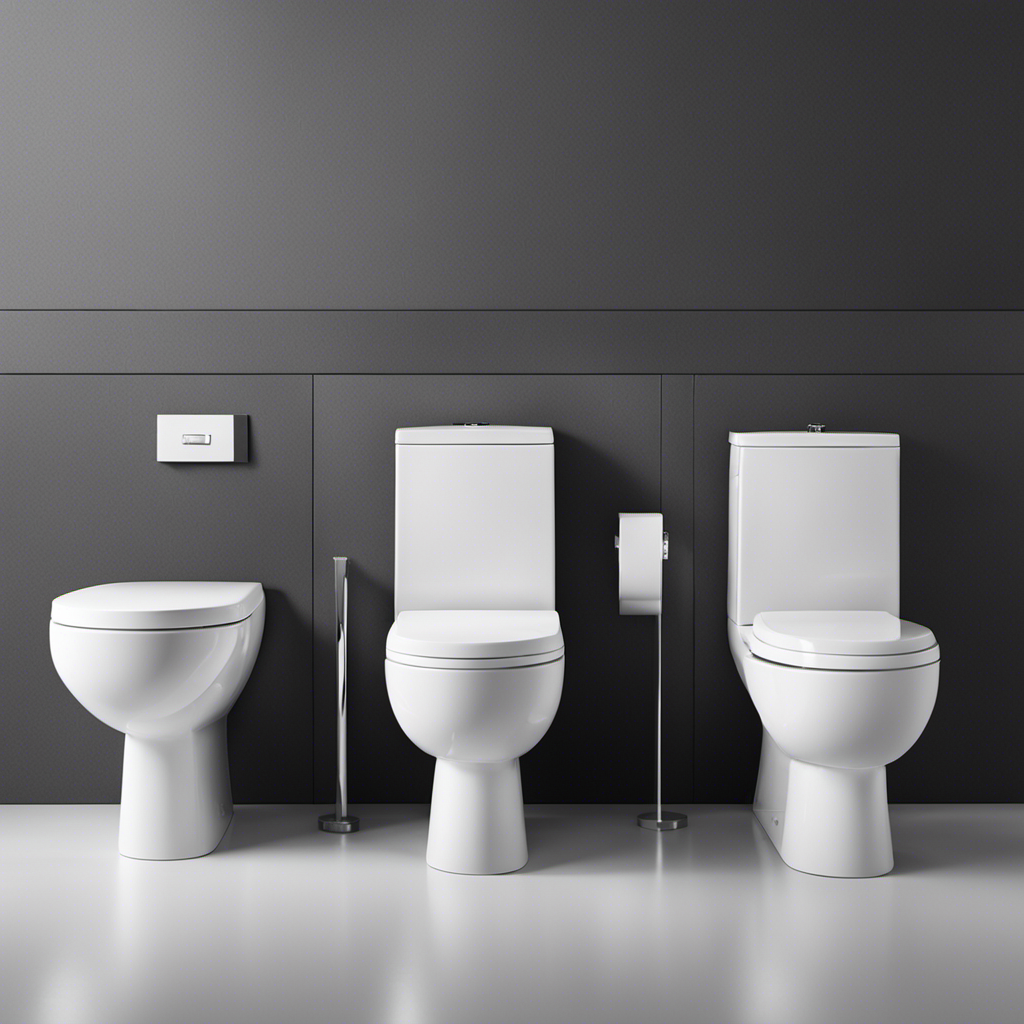Did you know that a slow-flushing toilet is a common problem in many households? It can be frustrating and inconvenient when you’re in a hurry or have guests over.
In this article, I will explore the various causes of a slow-flushing toilet and provide you with practical solutions. From common blockages and faulty flappers to inadequate water supply and clogged vent pipes, understanding these issues will help you troubleshoot and fix the problem efficiently.
So, let’s dive in and get your toilet flushing smoothly again!
Key Takeaways
- Common blockages, such as debris, toilet paper, foreign objects, and septic tank issues, can cause a toilet to flush slowly.
- A faulty flapper, with issues like being defective, worn-out, warped, cracked, or with mineral deposits, can also lead to slow flushing.
- Inadequate water supply, often caused by low water pressure due to plumbing leaks, can result in incomplete or weak flushes.
- A clogged vent pipe can cause slow flushing, highlighting the importance of regular inspection and cleaning to prevent blockages.
Common Blockages
If you notice that your toilet is flushing slow, one common cause could be a blockage in the pipes. Pipe obstructions can occur due to various reasons, such as the accumulation of debris, toilet paper, or even foreign objects that accidentally find their way into the toilet bowl. These obstructions restrict the flow of water, leading to slow flushing.
Another issue that can contribute to slow flushing is septic tank problems. When the septic tank is full or experiencing issues, it can affect the flushing performance of your toilet. In such cases, it is crucial to address the blockages promptly.
Regular maintenance, proper disposal of waste, and avoiding flushing non-flushable items can help prevent pipe obstructions and septic tank problems, ensuring a smooth and efficient flushing experience.
Faulty Flapper
Check if the flapper in your toilet tank is defective or worn out. The flapper is an essential component that controls the flow of water from the tank to the bowl during a flush. Over time, the flapper can become warped, cracked, or covered in mineral deposits, leading to a slow or incomplete flush. To determine if the flapper needs replacement, perform a simple test. Add a few drops of food coloring to the tank water and wait for about 15 minutes without flushing. If the colored water seeps into the bowl, it indicates a faulty flapper. Replacing the flapper is a straightforward task that can greatly improve the flushing performance of your toilet. Regular toilet maintenance, including flapper replacement, is crucial to keep your bathroom functioning smoothly.
| Flapper Replacement |
|---|
| 1. Turn off the water supply to the toilet. |
| 2. Flush the toilet to drain the tank. |
| 3. Disconnect the chain connecting the flapper to the flush handle. |
| 4. Remove the old flapper from its seat. |
| 5. Install the new flapper, ensuring it is properly aligned and seated. |
Inadequate Water Supply
The inadequate water supply can lead to incomplete or weak flushes in your toilet. When the water pressure is low, it affects the flushing mechanism, making it less effective.
Low water pressure can be caused by various factors, such as plumbing leaks or issues with the water supply system. Plumbing leaks can result in a decrease in water pressure as the water escapes through the leak instead of reaching the toilet. This reduced water flow can lead to incomplete or weak flushes, as there is not enough force to properly clear the waste.
It is important to address any plumbing leaks promptly and ensure that the water supply system is functioning optimally to maintain proper water pressure for a strong and efficient flush.
Clogged Vent Pipe
To prevent a clogged vent pipe, you should regularly inspect and clean it to ensure proper airflow and prevent blockages. A blocked vent pipe can cause slow flushing toilets and other plumbing issues. Here are some maintenance tips to keep your vent pipe clear and your drains flowing smoothly:
| Maintenance Tips | Frequency | Tools Required |
|---|---|---|
| Inspect vent pipe | Annually | Flashlight |
| Remove debris | As needed | Screwdriver |
| Clear blockages | As needed | Plumbing snake |
Regularly inspecting the vent pipe with a flashlight can help you identify any signs of blockages, such as debris or bird nests. If you notice any obstructions, use a screwdriver to carefully remove the debris. For more stubborn blockages, a plumbing snake can be used to clear the vent pipe.
Issues With the Flush Valve
If you’re experiencing issues with your toilet’s flush valve, it’s important to address them promptly to prevent further plumbing problems.
One common issue is a flush handle malfunction, which can cause the toilet to flush slow or not flush at all. This problem is often caused by a loose or broken handle mechanism. To fix it, you’ll need to remove the tank lid and inspect the handle and chain. If the handle is loose, tighten the nut that secures it to the tank. If the handle is broken, replace it with a new one.
Another issue that can affect the flush valve is mineral buildup. Over time, minerals from the water can accumulate on the valve, causing it to stick and prevent proper flushing. To remove mineral buildup, you can use a mixture of vinegar and water to soak the valve and scrub away the deposits.
Regular maintenance and cleaning can help prevent these issues and keep your toilet flush valve working properly.
Conclusion
In conclusion, when it comes to a slow-flushing toilet, there are a few culprits to consider.
From common blockages that hinder the flow, to a faulty flapper that fails to release water efficiently, the reasons can be varied.
Inadequate water supply and a clogged vent pipe can also contribute to the sluggish flush.
Additionally, issues with the flush valve can impede the flushing process.
Understanding these potential issues will help you troubleshoot and resolve the problem, ensuring a swift and effective flush every time.










